#Oxudercidae
Text

Boodart’s Mudskipper (Boleophthalmus boddarti), showing off on the mudflats, family Oxudercidae, order Gobiiformes, The Sunderbands, India
photograph by Agasty Roy Arpita
#mudskipper#boleophthalmus#oxudercidae#bony fish#fish#ichthyology#gobiiformes#india#ocean#animals#nature
941 notes
·
View notes
Text

' TO START A JOURNEY ON A GREAT DAY '
#mudskipper#oxudercidae#fishes#shore creatures#cute animals#waves#nature#nature photoshoot#nature photography
502 notes
·
View notes
Text

O Peixe que pode andar
Oxudercinae ("peixe da lama") é uma subfamília de peixes anfíbios da família Oxudercidae. Existem 32 espécies vivas de peixes de lama.
Eles são conhecidos por sua aparência incomum e capacidade de sobreviver dentro e fora da água. No entanto, sua característica mais notável são suas barbatanas peitorais laterais que estão localizadas mais à frente e abaixo de seu corpo alongado. Essas barbatanas funcionam de maneira semelhante às pernas, pois permitem que os peixes se movam de um lugar para outro. Embora tenha a aparência típica de qualquer outro peixe, essas barbatanas frontais permitem que ele "salte" em superfícies lamacentas e até mesmo a capacidade de subir em árvores e galhos baixos. Devido a essas barbatanas, os saltadores de lama também foram capazes de saltar distâncias de até dois pés.
Talvez a característica mais interessante do saltador de lama seja sua capacidade de sobreviver e prosperar dentro e fora da água. Na verdade, descobriu-se que eles passam até três quartos de suas vidas em terra. Eles são encontrados em regiões tropicais, subtropicais e temperadas, incluindo o Oceano Indo-Pacífico e a costa atlântica da África.
0 notes
Photo

Ada yang kenal dengan ikan satu ini?
Eits, jangan salah tebak, ini ikan loh ya, bukan kodok!
Mari berkenalan dengan ikan amfibi penghuni hutan bakau satu ini, Ikan Tembakul!
Tembakul adalah ikan amfibi yang tergabung dalam famili Oxudercidae dan subfamili Oxudercinae. Ikan-ikan ini terkenal akan penampilannya yang unik dan kemampuan mereka untuk bertahan baik di dalam air maupun di darat. Di daerah lain tembakul juga disebut dengan timpakul, tempakul, gelodok, belodok, belodog, atau blodog, atau belacak (bahasa Melayu), gabus laut, lunjat, janjan (gresik), dan mudskipper (bahasa Inggris) disebut demikian karena kebiasaannya yang suka melompat-lompat di lumpur.
Ikan ini banyak ditemui di tempat berlumpur atau tempat dengan perairan dangkal, tak heran ikan ini senang mendiami hutan bakau terlebih ketika air surut.
Memiliki bentuk tubuh yang unik, dengan kedua bola mata yang menonjol di atas kepala seperti katak dengan sirip-sirip yang terkembang menawan. Badannya bulat panjang, sementara sirip ekornya membulat. Panjang tubuh bervariasi mulai dari beberapa sentimeter hingga mendekati 30 cm, dengan corak khas di tubuhnya.
Selain mampu bertahan hidup lama di daratan (90% waktunya dihabiskan di darat), tembakul dapat memanjat akar-akar pohon bakau, melompat jauh, dan ‘berjalan’ di atas lumpur. Pangkal sirip dadanya berotot kuat, sehingga sirip ini dapat ditekuk dan berfungsi seperti lengan untuk merayap, merangkak dan melompat.
Kemampuannya bernapas melalui kulit tubuhnya membantunya untuk bertahan di daratan dalam kurun waktu yang lama. Terdapat lapisan selaput lendir di mulut dan kerongkongannya yang membuat tembakul perlu mencelupkan diri ke air tiap beberapa saat.
Ikan amfibi ini biasa menggali lubang di lumpur yang lunak untuk sarangnya. Lubang ini bisa sangat dalam dan bercabang-cabang, berisi air dan sedikit udara di ruang-ruang tertentu. Ketika air pasang naik, tembakul umumnya bersembunyi di lubang-lubang ini untuk menghindari ikan-ikan pemangsa yang berdatangan.
Tembakul memangsa aneka hewan, mulai dari udang, ikan, kerang, cumi-cumi, sampai ke semut ngangrang, lalat, juga beberapa tumbuh-tumbuhan.
Tembakul hanya dijumpai di pantai-pantai beriklim tropis dan subtropis di wilayah Indo-Pasifik sampai ke pantai Atlantik, benua Afrika. Ikan ini dapat tetap hidup dan tahan terhadap kerusakan lingkungan. Di Tiongkok dan Jepang, tembakul diolah menjadi santapan dan juga sebagai obat tradisional, terutama sebagai obat sehat lelaki.
0 notes
Photo

Giant mudskipper (Periophthalmodon schlosseri) at Sungei Buloh Wetland Reserve in Singapore
Sheau Torng Lim
913 notes
·
View notes
Photo
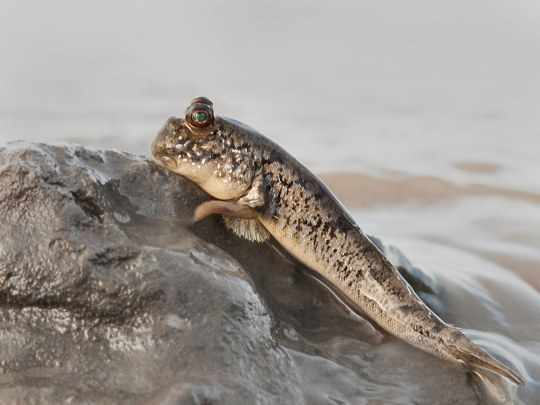

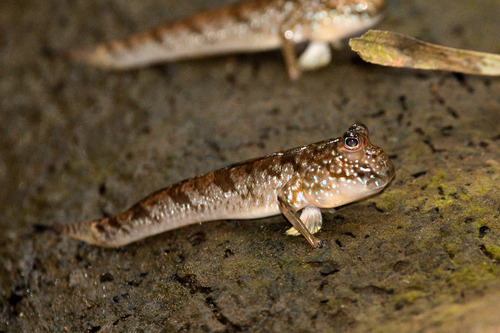

The Atlantic Mudskipper: A Fish Out of Water
Found only along the west African Cost, the Atlantic Mudskipper (Periophthalmus barbarus) is an incredibly unique species of fish. What makes it so special is that, unlike most other fish, the mudskipper can survive on land. It has several adaptations to make it semi-terrestrial. A layer of mucus over the surface of the body allows it to retain moisture, and when on land it can close its gill chambers and breathe through its skin. The eyes are set high on the head and can move independently 360 degrees, giving the Atlantic mudskipper a wide range of vision. Lastly, the pectoral fins that allow it to crawl, climb, and even skip on land, aided by a pair of pelvic fins.
P. Barbarus’ special adaptations allow it to occupy uncommon habitats within its range. It prefers semi-salty brackish water, especially at the mouths of rivers and in mudflats, although they are able to tolerate a range of temperatures and salinity. They can also be found in mangrove forests and lagoons, where they can climb up onto the roots of trees. Along the coast, individuals are most often visible at low tide when they climb up on the shore to feed. In these regions the Atlantic mudskipper digs burrows in which they can hide during high tide. To blend in, they are usually tan to dark brown with dark mottling along the back and bright blue spots on the cheeks.
During the day, the Atlantic mudskipper spends most of its time feeding and defending its territory. They are carnivorous fish, preying on crustaceans, insects, and small fish. The mouth of P. barbarbus is specially shaped so that it covers its prey with water, then sucks the water back up with its accompanying meal. When threatened by terrestrial predators such as shore birds, the Atlantic mudskipper lives up to its name and will ‘skip’ away. These fish also use their mouths in fights, which are quite common. Individuals typically guard of about 1m around their burrow. Males are especially territorial, and will fiercely guard burrows and mates from competitors. Despite their ferocity, Atlantic mudskippers are not very large; most only grow to be 14-16cm long.
Mating occurs year round, although peak times are between February and May. Males engage in territorial displays, after which females will select a male and enter his burrow to lay eggs. Clutches can easily number in the thousands, although few survive to adulthood. The male guards the burrow and, after a brief incubation period, floods it to induce hatching. Larvae drift for 1-2 months before metamorphosing into a juvenile stage, at which time they begin to return to land. Individuals reach sexual maturity at about 10.2-10.8 cm in length, roughly 1 year after hatching, and can live up to 5 years in the wild.
Conservation status: The IUCN rates the Atlantic mudskipper as Least Concern, although populations are declining. Their primary threats are from over-fishing and by-catch, pollution, and urban development. Some areas within their region have instituted sustainable fishing practices and established protected reserves as part of conservation efforts for this species.
Photos
Eva Mártensson
Eric Verhagen
Pedro Martins (via iNaturalist)
Rogerio Ferriera
#atlantic mudskipper#Gobiiformes#Oxudercidae#mudskippers#gobies#fish#Ray-Finned Fish#bony fish#wetlands#wetland fish#rivers#river fish#intertidal fauna#intertidal fish#coral reefs#coral reef fish#atlantic ocean#africa#west africa#animal facts#biology#zoology
149 notes
·
View notes
Text

Mudskipper, Periophthalmus (1801) - Ferdinand Bauer
#Wonder Rooms#Cabinet of Curiosities#Public Domain#19th Century#Natural History#Scientific Illustration#Ferdinand Bauer#Zoology#Animalia#Fishes#Actinopterygii#Gobiiformes#Oxudercidae#Periophthalmus#Mudskipper
17 notes
·
View notes
Text
Did you know?
Goby is a common name for many species of small to medium sized ray-finned fish, normally with large heads and tapered bodies, which are found in marine, brackish and freshwater environments. Traditionally most of the species called gobies have been classified in the order Perciformes as the suborder Gobioidei, but in the 5th Edition of Fishes of the World this suborder is elevated to an order Gobiiformes within the clade Percomorpha.
Not all the species in the Gobiiformes are referred to as gobies and the "true gobies" are placed in the family Gobiidae, while other species referred to as gobies have been placed in the Oxudercidae. Goby is also used to describe some species which are not classified within the order Gobiiformes, such as the engineer goby or convict blenny Pholidichthys leucotaenia.
The word goby derives from the Latin gobius meaning "gudgeon", and some species of goby, especially the sleeper gobies in the family Eleotridae and some of the dartfishes are called "gudgeons", especially in Australia.
(Info)
57 notes
·
View notes
Photo

Lizard Goby, Rhinogobius flumineus
The lizard goby, is a species of goby in the family Oxudercidae, endemic to Japan, seen here in Hamamatsu, Shizuoka Prefecture.
A small freshwater fish found in fast-flowing streams, it maintains its position against the current by gripping a rock with a sucker formed from two of its fins. The fish's mouth is slightly asymmetric; dextral (right-sided) fish tend to curve their bodies to the right as they rest, while sinistral (left-sided) fish tend to adopt a left-curving posture.
The fish are omnivorous, picking edible items off the stream bed with the side of the mouth, but dextral and sinistral fish show no preference for which side of the mouth they use for this purpose.
photograph by Seotaro | Wikipedia CC
via: Wikipedia
35 notes
·
View notes
Photo
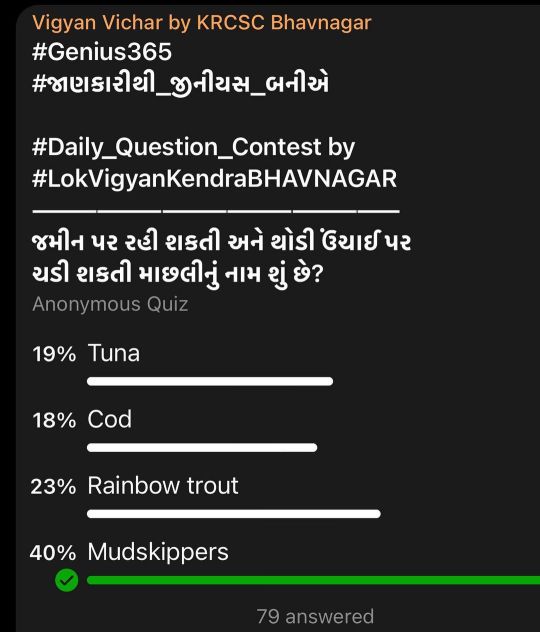
Mudskippers are amphibious fish. They are of the family Oxudercidae and the subfamily Oxudercinae. There are 32 living species of mudskipper. They are known for their unusual appearance and their ability to survive both in and out of water. https://www.instagram.com/p/CUslyR8lKdc/?utm_medium=tumblr
0 notes
Text
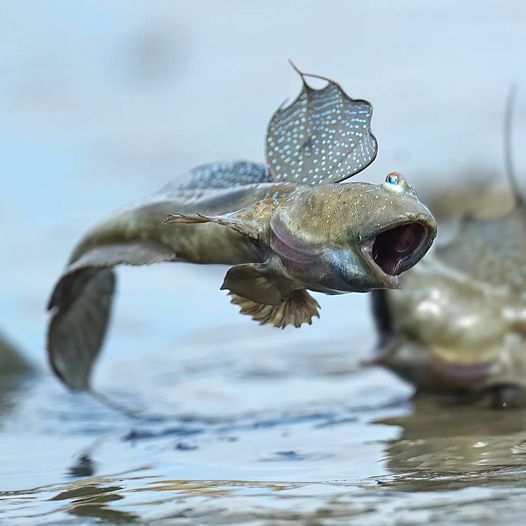
Great Blue-spotted Mudskipper (Boleophthalmus pectinirostris), family Oxudercidae, found on coastal mudflats in SE and East Asia
photograph by @joinus12345
407 notes
·
View notes
Text

IT'S COOL HERE!
#mudskipper#fishes#oxudercidae#shore creatures#cute#cool#cool water#nature#nature photoshoot#nature photography
64 notes
·
View notes
Text

Two mudskippers (Boleophthalmus caeruleomaculatus) fighting in shallow waters. The unusual fish is helping scientists understand more about how human ancestors transitioned to life on land from water millions of years ago. Mudskippers are thought to be the only fish that can blink - Photograph: Daniel J Field/PA
click image link for more Week in Wildlife photos.
0 notes
Text

Boodart's Mudskipper aka Boddart's Goggle-eyed Goby (Boleophthalmus boddarti), family Oxudercidae, Laem Phak Bia, Phetchaburi, Thailand
photograph by JJ Harrison
235 notes
·
View notes
Text

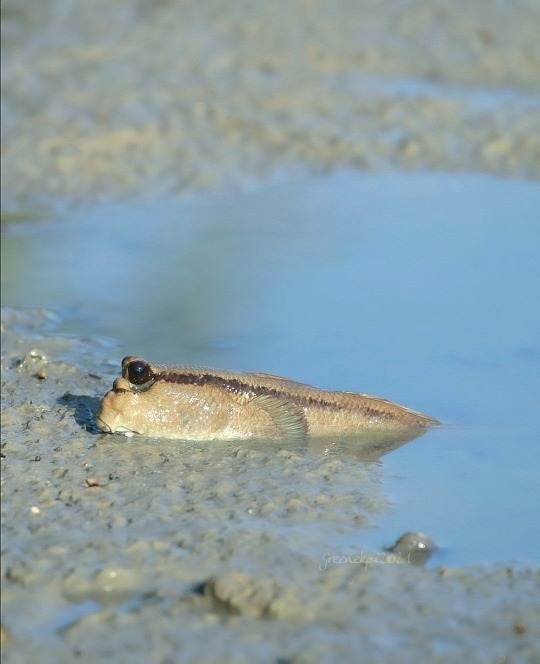
Sliding and slipping or skipping and gliding...
Resting/thinking/dreaming/anticipating...
878 notes
·
View notes